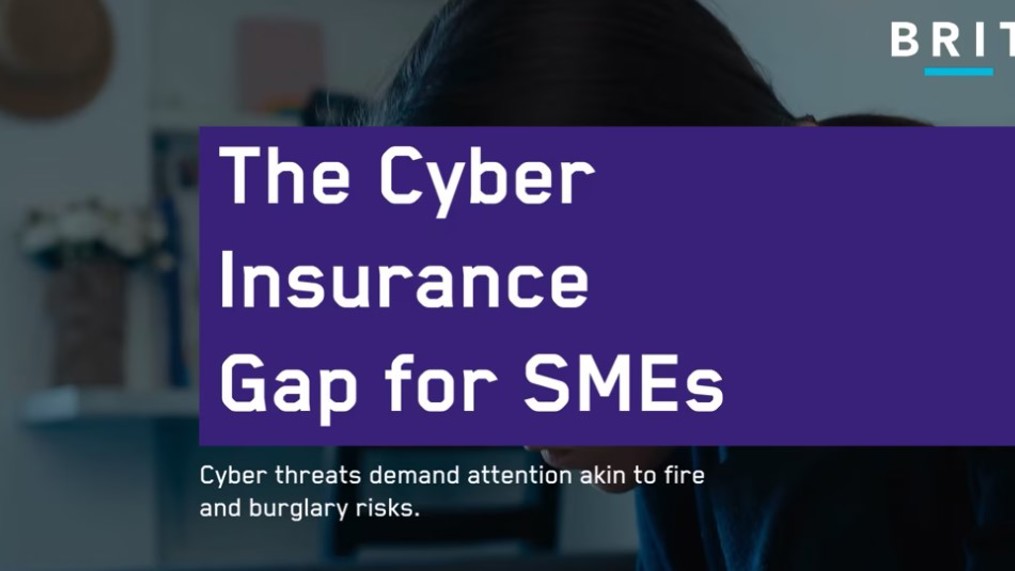SMEs Underestimate Cyber Risks: In today’s increasingly digital economy, cyber attacks are no longer a distant threat — they are a daily reality for businesses of all sizes. Yet, according to a new survey commissioned by the Insurance Bureau of Canada (IBC), a significant number of small and medium-sized enterprises (SMEs) continue to underestimate their exposure to cyber risk, leaving them dangerously underprepared. Despite mounting evidence of the financial, legal, and reputational damage that cyber incidents can inflict, many SMEs operate with limited defences and inadequate insurance coverage, exposing them to potentially devastating losses.
This growing vulnerability stands in stark contrast to larger corporations, which have begun embedding cyber risk management into their core business strategies. From implementing robust security measures to securing comprehensive stand-alone cyber insurance policies, these organizations are proactively safeguarding their operations against evolving digital threats. SMEs, on the other hand, are falling behind — a gap that could prove costly as cyber threats become more frequent, sophisticated, and expensive.
The implications of this underestimation are profound. Cyber attacks are not just a technology issue; they are a business continuity risk that can disrupt operations, compromise customer trust, trigger regulatory penalties, and even lead to bankruptcy. Without adequate protection — both technological and financial — SMEs remain highly exposed to an increasingly hostile cyber landscape.
Most SMEs Underestimate Their Cyber Vulnerability
The IBC survey paints a worrying picture of how SMEs perceive their cyber risk exposure. Fewer than half of respondents (48%) believe their business is vulnerable to a cyber attack or data breach, and only 6% strongly agree that their company could be at risk. This optimism is sharply at odds with data from the Business Development Bank of Canada, which shows that nearly 75% of small businesses have already experienced a cyber security incident.
Moreover, while two-thirds of SMEs express confidence in their ability to withstand a breach, only 47% say they are truly prepared for one. Even more alarming is the low uptake of cyber insurance: just 22% of SMEs carry any form of cyber coverage, and only 12% hold a dedicated stand-alone policy. This leaves the majority of small businesses financially exposed to the full cost of a breach, which can run into hundreds of thousands of dollars.
Why Cyber Insurance Matters More Than Ever
Cyber incidents can have wide-ranging and expensive consequences — far beyond the scope of traditional business insurance. As Mahan Azimi, Director of Catastrophic and Emerging Risk Policy at IBC, explains, standard commercial policies typically do not cover critical post-incident expenses such as:
- The cost of forensic investigators to identify the source and scope of a breach
- Legal counsel to navigate regulatory reporting requirements and lawsuits
- Public relations support to manage reputational fallout
A stand-alone cyber insurance policy is specifically designed to cover these costs. It also provides compensation for income disruption, helps fund data recovery and restoration efforts, and often includes access to dedicated incident response teams. These features can make the difference between a swift recovery and a crippling financial blow.
Emerging Technologies Add New Layers of Risk
As businesses increasingly integrate tools like artificial intelligence (AI) into their operations, the complexity of cyber risk is rising. According to the IBC survey, 72% of SMEs believe that AI and similar technologies could make protecting against cyber attacks more difficult — up from 65% last year.
Yet, despite this growing concern, only 45% of SMEs have implemented training or policies to help employees identify AI-generated scams such as deepfakes or phishing attempts powered by generative AI. This knowledge gap significantly heightens the risk of successful cyber attacks, particularly social engineering schemes that exploit human vulnerabilities.
Read about: RBI Proposes Risk-Based Deposit Insurance Premiums and Lending Reforms for Banks
Third-Party Risks and Legal Exposure
Another area of increasing concern is third-party risk. As SMEs rely more heavily on outsourced IT providers, cloud services, and external vendors, they also inherit new vulnerabilities. More than 27% of SMEs in the survey said they are worried about lawsuits stemming from data breaches, especially when third-party partners are involved.
While larger organizations often have dedicated risk management teams to assess, monitor, and mitigate these threats, most SMEs lack the resources or expertise to do so effectively. This further underscores the importance of comprehensive cyber insurance and proactive risk management strategies.

Bridging the Cyber Resilience Gap
To help SMEs navigate the complexities of cyber risk, IBC has launched a free Cyber Insurance Guide. This resource is designed to help business owners understand:
- The types of cyber coverage available
- How to apply for a policy
- Practical steps to strengthen cyber defences and improve resilience
By taking advantage of such resources — and by reassessing their current risk posture — SMEs can significantly enhance their ability to prevent, respond to, and recover from cyber incidents.
Conclusion: Cyber Risk Is a Business Risk — Not an IT Issue
In an era where data is currency and digital operations underpin nearly every business function, cyber security can no longer be treated as an optional extra. The IBC’s findings reveal a dangerous disconnect between perception and reality among SMEs: many underestimate their vulnerability, overestimate their preparedness, and remain without adequate insurance coverage.
The consequences of this complacency are potentially catastrophic. A single breach can result in crippling financial losses, legal liabilities, regulatory fines, and lasting reputational damage. Moreover, as technologies like AI and cloud computing expand the attack surface, threats will continue to evolve — often faster than businesses can adapt.
For SMEs, the message is clear: cyber risk is not just an IT problem; it’s a strategic business challenge that requires board-level attention. Investing in proactive security measures, employee training, and comprehensive cyber insurance is not just about protection — it’s about ensuring long-term survival and competitiveness.
The time to act is now. Businesses that close their cyber insurance and resilience gaps today will be far better positioned to thrive in tomorrow’s digital economy.
FAQs: Cyber Risk and Insurance for SMEs
1. Why is cyber insurance important for small and medium-sized businesses?
Cyber insurance provides financial protection against the growing costs of cyber incidents, including data breaches, ransomware attacks, and regulatory fines. It covers expenses such as forensic investigations, legal assistance, customer notification, public relations, and revenue losses — costs that traditional business insurance often excludes.
2. What does a stand-alone cyber insurance policy typically cover?
A stand-alone policy covers a wide range of risks including data recovery, system restoration, business interruption losses, legal and regulatory costs, third-party liability claims, and access to specialized incident response teams. Some policies also offer proactive services such as risk assessments and employee training.
3. How does AI increase cyber risk for SMEs?
AI can be used by attackers to automate and scale cyber attacks, create more convincing phishing scams, and exploit vulnerabilities faster. Deepfakes and AI-generated social engineering tactics are becoming increasingly sophisticated, making human error a greater risk factor.
4. How can SMEs improve their cyber resilience without large budgets?
SMEs can enhance resilience by implementing strong password policies, enabling multi-factor authentication, regularly updating software, training employees to recognize scams, backing up critical data, and conducting regular security assessments. Bundling these measures with cyber insurance creates a stronger safety net.
5. Are third-party vendors a significant cyber risk?
Yes. Outsourced IT providers, cloud platforms, and other vendors often have access to sensitive systems and data. A breach in their environment can compromise your business. Regularly auditing vendor security practices, establishing clear contractual obligations, and securing third-party liability coverage in your cyber insurance policy are critical steps.







1 thought on “SMEs Underestimate Cyber Risks, Leaving Dangerous Gaps in Insurance Protection: IBC Report”